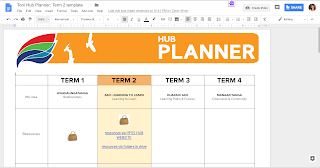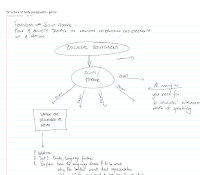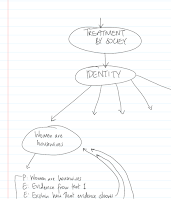What I see is awesome.
Elizabeth Rata, come visit us. Come in on a Wednesday and see first-hand how projects can be done from a context of knowledge that allows young people to explore, make sense, evaluate. To focus, generate, and evaluate. To test, refine, and evaluate again.
But make sure you come to Hobsonville Point Secondary School. If you go to Hobsonville School, you'll wind up at the primary down the road.
Elizabeth Rata: NCEA's fatal flaw is to assess projects before knowledge
The author sounds warning alarms, the title disengages me. But, I'm open to reading a range of viewpoints and debating their merit. I persevere.By: Elizabeth Rata
When stuck in a hole the best advice is to stop digging, but what if you can't spot the hole in the first place? The NCEA review's promotion of project-based learning is an example of the sort of frantic digging that occurs when profoundly and blindly stuck.
Where is the hole? By whose estimation is PBL a hole? Is it only white, privileged, middle-class people who define PBL as a hole? Why is it a hole? Because it doesn't fit the model of learning the Empire established? What if the empire's way of thinking is no longer relevant? What if the skills needed for the current innovation climate are not the same skills that were needed for the Industrial Revolutions climate?
What's wrong with projects? As the Hobsonville School students argued so passionately in the Herald recently, learning by doing projects is motivating and encourages learning. This "knowledge-how" approach also fits nicely with New Zealand's skills-based national curriculum. But what does the approach actually mean and what is the source of this learning?
When was Elizabeth Rata at HPSS? Does she realise that Hobsonville School is the primary down the road? Has she seen what the students must do and know in order to complete these projects? I invite her to come and spend a Wednesday with us and see how knowledgeable these students actually are. This learning not only fits with the NZC, but also with the Kaupapa Māori notion of ako and matauranga. Does Elizabeth Rata include these priority learners in her discourse?
These are the questions the NCEA review needs to ask. We curriculum designers call the source of learning "knowledge-that". It's made up of propositions, concepts, and content, referred to broadly as academic subjects. Knowledge-that is very different from the knowledge-how we practise in activities and projects.
Are teachers no longer designers of curriculum? Is the role of teachers to be conduits only and roll out knowledge that may or may not be accessible to those in front of them? Or should teachers be holders of knowledge who can deliver BOTH knowledge AND skills? Why does the conversation need to be binary? Instead of EITHER skills OR knowledge, shouldn't we be equipping students with BOTH?
The difference between the two forms of knowledge matters because the problem for our education system is to do with their order. The fatal flaw in the national curriculum and NCEA is that the knowledge order is wrong.
How can my students do their skill-based assessments without knowledge? Can they write in sophisticated ways if they only know skills? If I teach skills only (as I admit I have erroneously done in the past), I am teaching only to the assessment. Was NCEA created to be this way? Or was the point of NCEA to be flexible in the delivery of knowledge and assessing of skills. If evidence towards assessment is collected as naturally occurring as possible, doesn't that promote knowledge development alongside skill development? If I teach BOTH/AND in a context that is designed to promote this, doesn't this meet the needs of the students in the classroom?
At present we put the skills of knowledge-how first. But we need to start with academic knowledge (knowledge-that), then have the well-designed and exciting activities and projects which allow students to show their understanding.
Is this the fault of NCEA or is this the fault of teachers not having shifted their mindsets? Is this how we've ended up with a culture of credit counting and teaching to assessment? Is this why students are stressed so much?
Assessment comes in at the final stage. Crucially, it should measure the understanding of the knowledge as demonstrated in its skilful application. At present the assessment tends to measure the skills themselves. It's easier that way.
Why do assessments do this? Is that because of the creators of the assessment or because of NCEA itself? Where in the English, Art History, or Classics curricula are skills assessed in absence of knowledge? Is this a judgement of more numeracy-based subjects than literacy ones? Does NCEA insist on numeracy-based subjects being skills-based assessments? When we combine subjects with a mix of content and skills-based learning, does this provide the context for BOTH/AND learning?
Let's look at some examples — the alphabet (for young children), trigonometry (for older students), electrical circuits (for university engineering students). The same design principles apply to all ages.
If we use a knowledge-how approach to start, we would ask students to sound out the letters of the alphabet, measure the viewshafts from Auckland's volcanoes, calculate the current in the resistor in the circuit. It certainly sounds a sensible approach. After all, we do want young people to use the knowledge they acquire at school.
What's missing from these examples is what we need to know first so that using the skills is actually showing what we understand as well as what we can do.
When children sound out alphabet letters how do we know they associate the squiggles on the page with alphabetical names or are they just parroting the adult?
What trigonometry do you need before you can measure the viewshafts from Auckland's volcanoes or do you simply follow a list of instructions?
We may be able to calculate the current in the resistor in the electrical circuit by following the rules. But if we want to be able to do this in other projects, to generalise in other words, we need to know that current is a response to the application of electric potential to a closed circuit.
Following instructions and applying skills won't tell us that. We have to be taught it.
This is the crucial difference between the two forms of knowledge. Academic knowledge (knowledge-that) enables us to understand the meaning of what we do. It is challenging but also deeply fulfilling when we finally "get it". Because it can't be picked up from experience, it needs to be taught by an expert; a teacher in other words.
Does academic only only belong to academics? Is there no room for allowing autodidactic learning? Can we not curate experiences for ourselves or engage with the experiences of others? If we always need an expert to tell us what to do, how are we going be life-long learners? If we always need an expert, what will happen when no one in the room is an expert? How does this align with the principles of ako?
It's the old saying, academic knowledge is "taught not caught". The problem is academic knowledge is not as visible as knowledge-how so we tend to think the skills we see in action are the same as understanding what is meant.
A serious limitation of knowledge-how is that it doesn't provide the knowledge needed to generalise. When we think of professionals such as engineers, medical professionals, and teachers whose knowledge has consequences for the lives of others, whether the skills we see on the surface are informed by deep knowledge really does matter.
Starting with knowledge-how, with the project hands-on approach, leads to the very rote learning its supporters are, rightly, so opposed to. But there are deeper problems caused by starting with knowledge-how.
Does it have to?
Without being taught the academic ideas behind the "doing" we cannot generalise to other projects or other situations. We are stuck in the one instance, in the here and now. We can follow instructions. We can apply skills, often quite advanced skills, but we can't understand, let alone explain and justify, why we do what we do.
It should concern us all that while New Zealand students are stuck in the knowledge-how world of experience, the NCEA review is there too.
• Professor Elizabeth Rata is director of the Knowledge in Education research unit in the faculty of education and social work at the University of Auckland

























